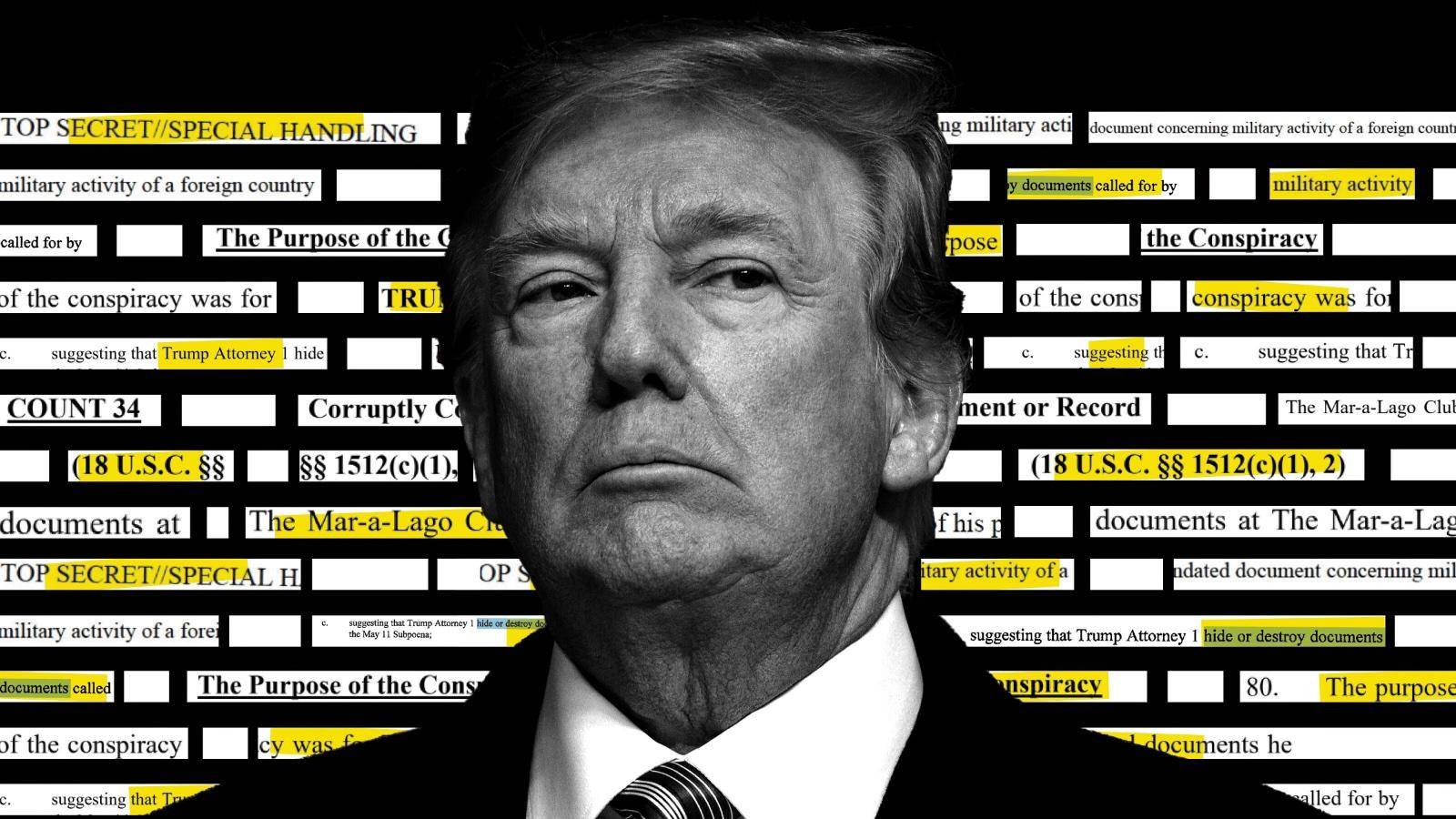
Former President Donald Trump's second indictment, annotated
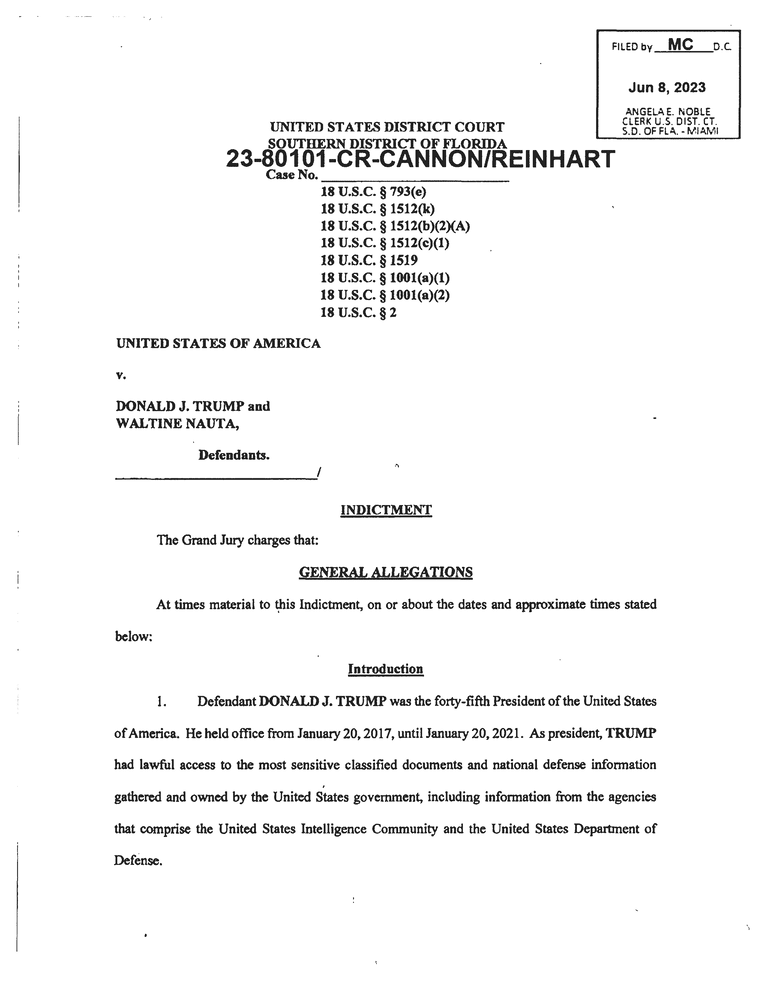
Presidents can and do have access to any information the government possesses, and the government has a legitimate need to keep some secrets about intelligence gathering and defense capabilities, including its nuclear arsenal.
The US Intelligence Community is comprised of 18 distinct agencies, including the CIA and the National Security Agency and elements of the Department of Defense.
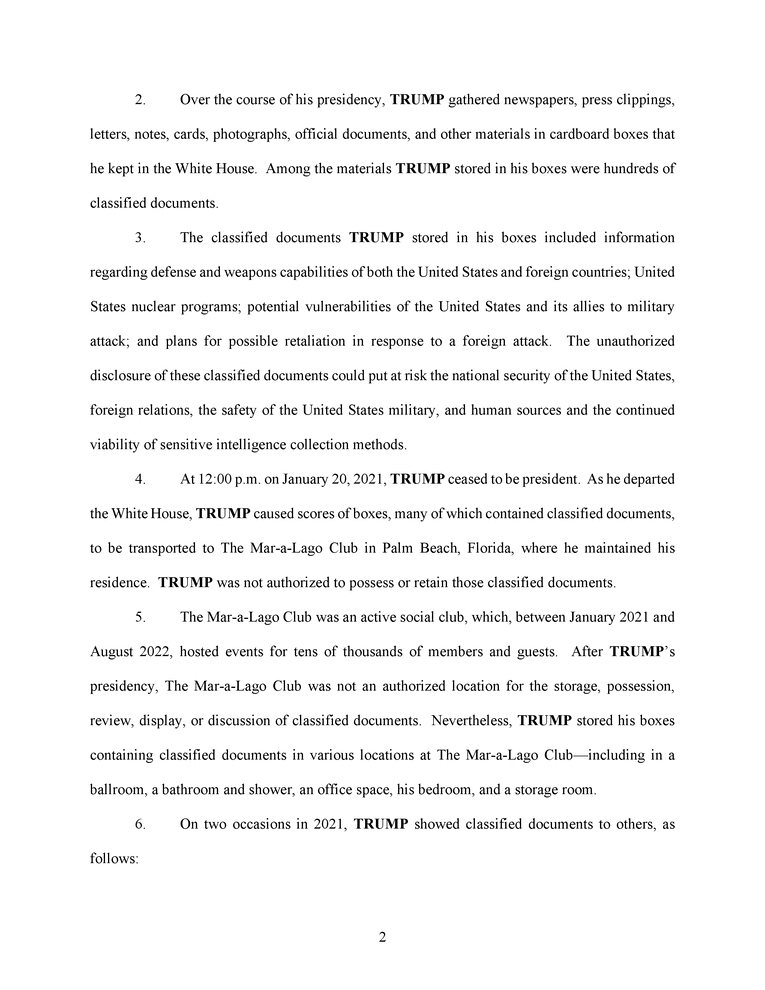
None of this should be surprising to anyone who has paid much attention to Trump. He’s a collector of keepsakes and other things that cross his desk. As president, classified material crossed his desk. He kept it in boxes along with the rest of his mementos.
But the nonspecific details we’re given about his keepsakes is quite interesting: classified details about the US nuclear program, plans for attacks and more.
That he should not have kept this material is clear. One thing his supporters will argue is that there is nothing in this indictment that suggests the material got into the wrong hands or that the United States suffered as a result of Trump taking them.
Trump knew material was classified. The indictment details improper storage of the documents at his Mar-a-Lago resort in Florida, but both instances of Trump displaying them are at his summer residence: his golf club in Bedminster, New Jersey.
One of these instances CNN has detailed . The meeting had to do with two people helping former White House chief of staff Mark Meadows with his autobiography.
The military official is Chairman of the Joint Chiefs of Staff Gen. Mark Milley, who is still the nation’s top general. The country is Iran. Trump was disputing a report that Milley worried he would try to attack Iran.
Trump tried to obstruct the investigation. The government thinks it can prove Trump intentionally tried to interfere with the investigation by having material moved.
Meet Walt Nauta. Few Americans knew the name of Trump’s aide before today. Nauta is a former US Navy officer who served as Trump’s military valet in the White House and followed him to Mar-a-Lago. The government says he was Trump’s accomplice in hiding classified documents.
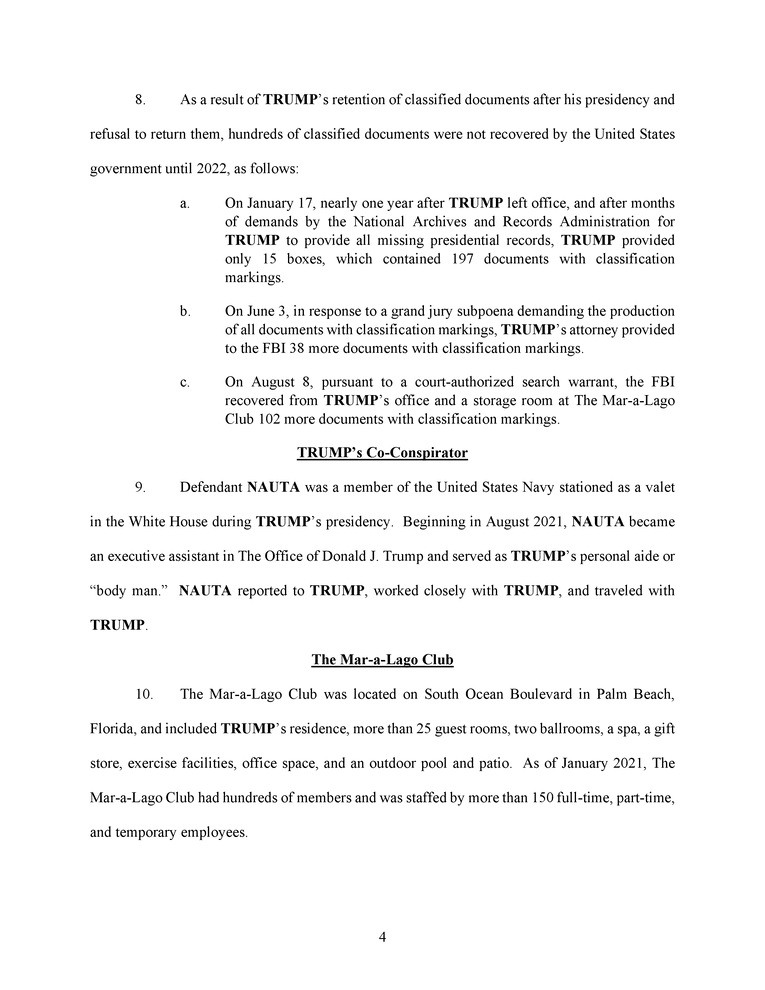
Trump often complains that other presidents who kept classified documents are not targeted for prosecution. That’s not completely true since there is a special counsel also investigating President Joe Biden.
More importantly, those officials do not generally seek to hide the material. The National Archives tried repeatedly to get documents back from Trump. The government says despite repeated attempts to get the documents, Trump failed to turn all of them over before the FBI seized them.
Nauta. You’re going to read a lot about Nauta in this indictment. Read more about him.
Mar-a-Lago. Sounds like a nice place. Here’s a look inside .
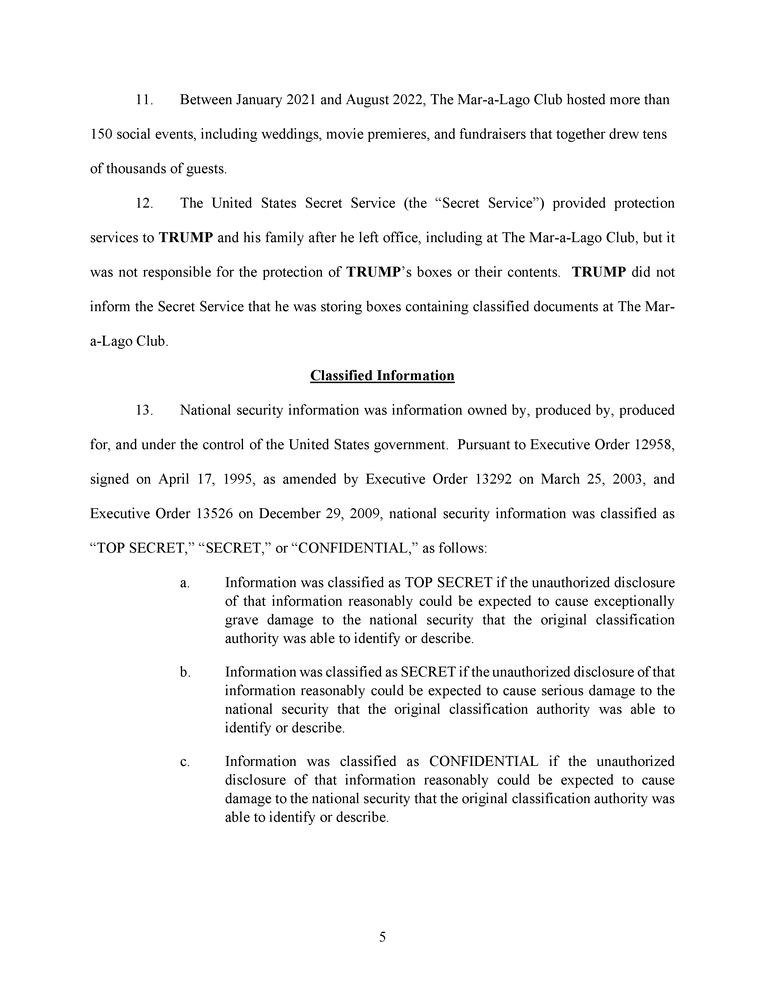
Secret Service. You can imagine that Trump will argue Mar-a-Lago was secure because he had Secret Service protection. But the government points out that protecting classified material is not their job.
SCIF. These documents are not supposed to be reviewed in a Secret Service-secured place, but in a sensitive compartmented information facility, or SCIF .
Classified information. The government’s system for classifying material is notably confusing and varies among the many different agencies that can classify material. They frequently disagree about what should be classified.
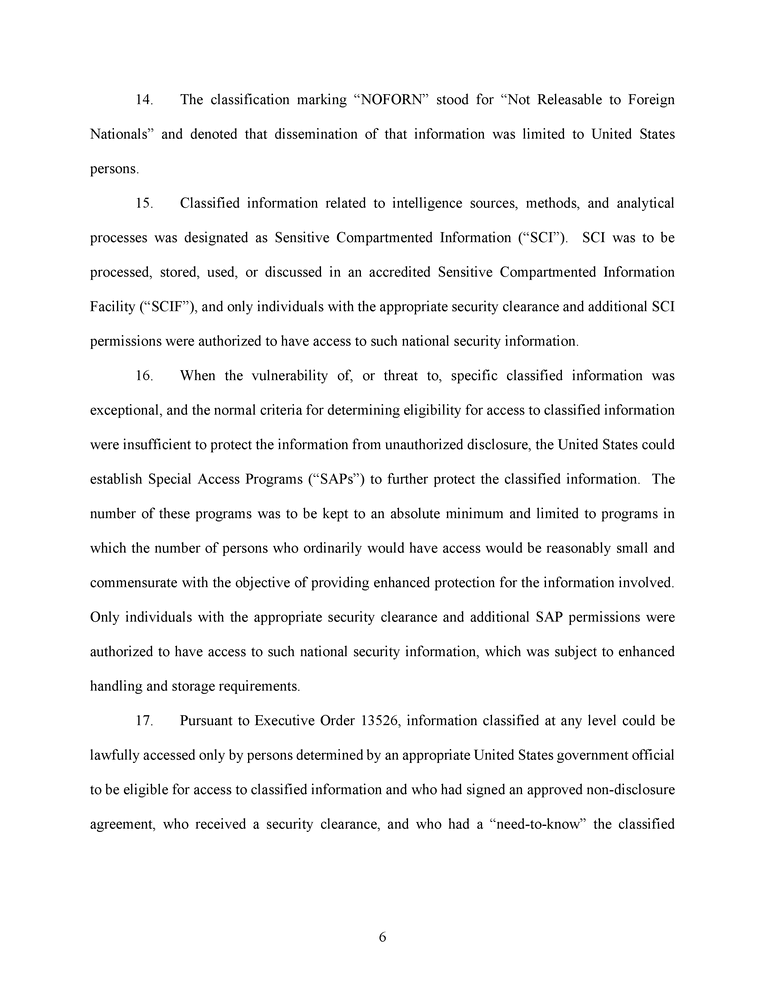
It’s worth mentioning that the US system for classifying material is so complicated that it should probably be revisited.
Even sitting intelligence officials have admitted the problem of overclassification is a national security risk .
There are, however, legitimate secrets. Plans of attack and specifics on nuclear weapons would seem to fall into that category.
“You’ll hear probably a talking point that will emerge in defense of the former president: We have an overclassification problem,” said former Rep. Adam Kinzinger, a Republican critic of Trump, appearing on CNN after the release of the indictment. “And we do have an overclassification problem. These are not documents that are overclassified.”
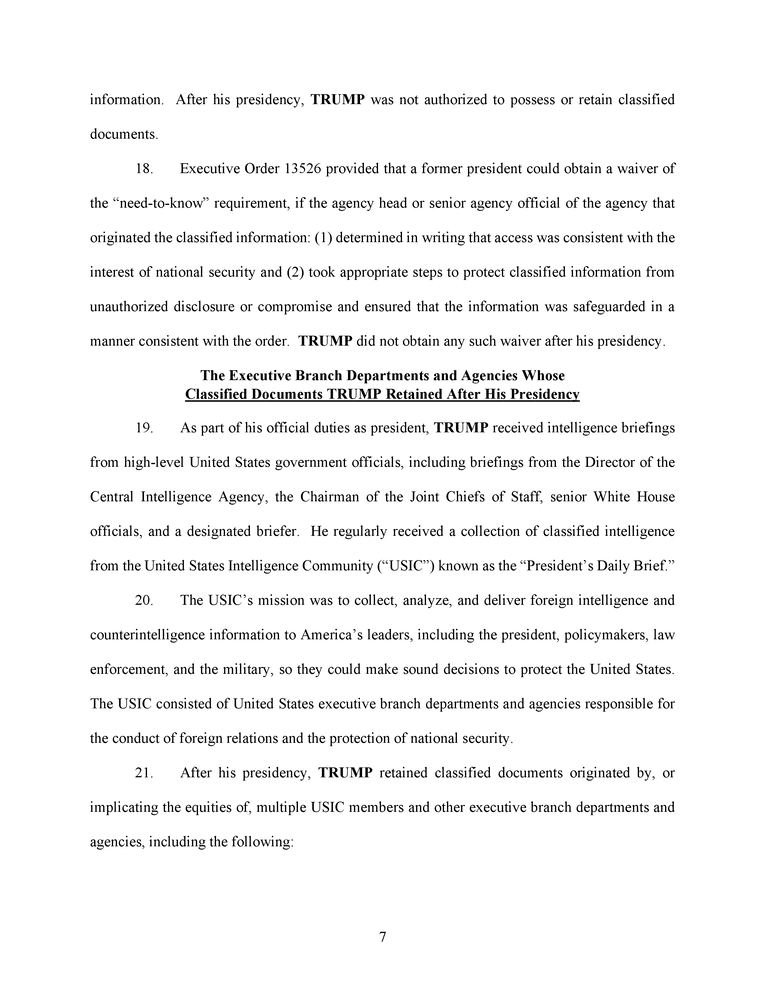
Intelligence briefings. During his presidency, Trump had little interest in keeping up with daily intelligence briefings, and a CIA report detailed that the Intelligence Community struggled to keep him briefed.
There would be some incredible irony if he were to be found guilty of keeping Intelligence Community briefs when he shouldn’t have.
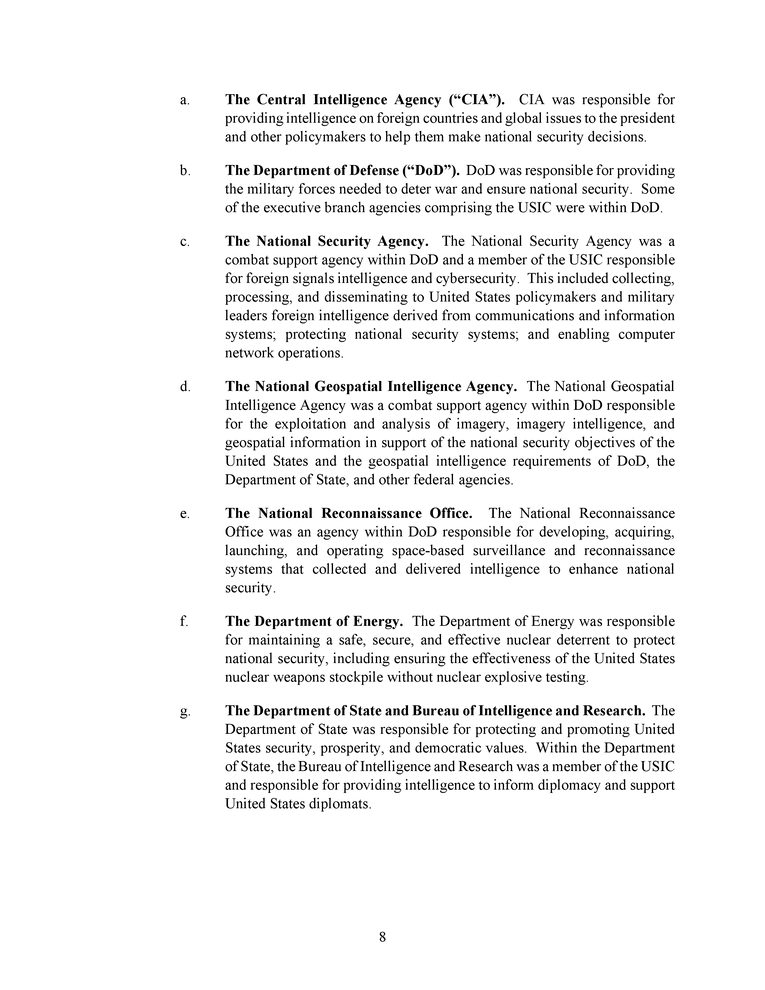
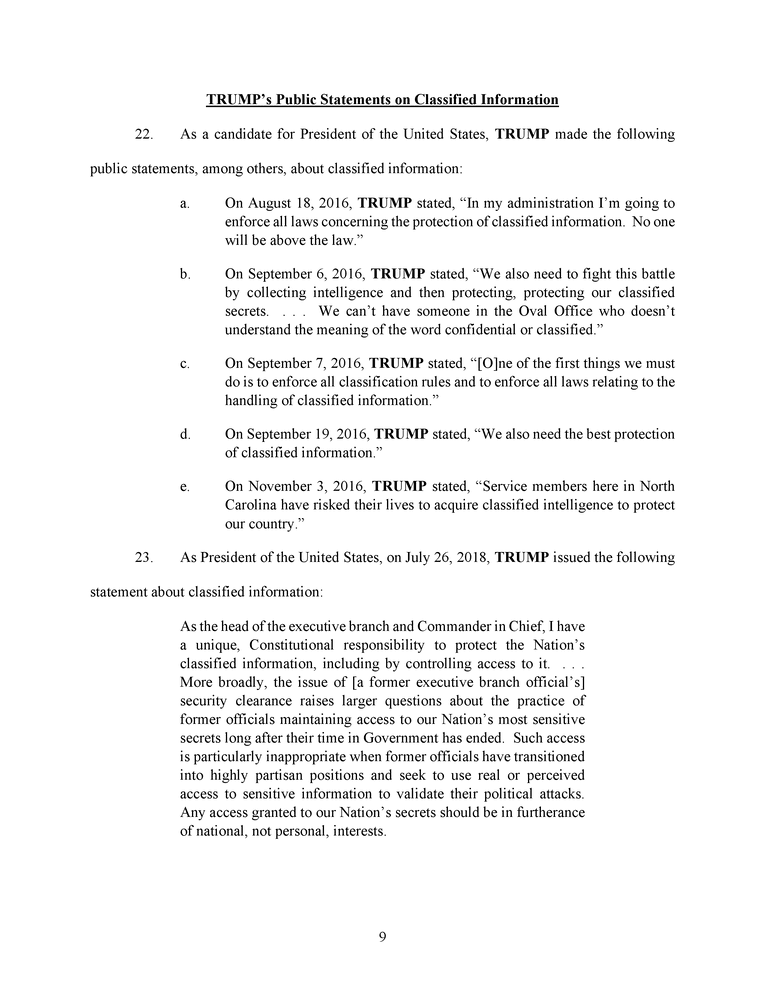
Trump’s history of promising to protect information. Here the government reminds us that protecting classified material was actually a main platform of Trump’s 2016 campaign.
Remember “lock her up?” The unwritten context is that Trump was bent on criticizing Hillary Clinton for her use of a private email server while she was secretary of state. When classified information was found on that server, Trump’s supporters would launch into chants of “lock her up!” during rallies.
Trump was briefed on what to do. CNN has previously reported that a former career White House official, who was in charge of advising the Trump and Obama administrations on the declassification process, testified to the special counsel that Trump knew the proper process for declassifying documents and followed it correctly at times while in office.
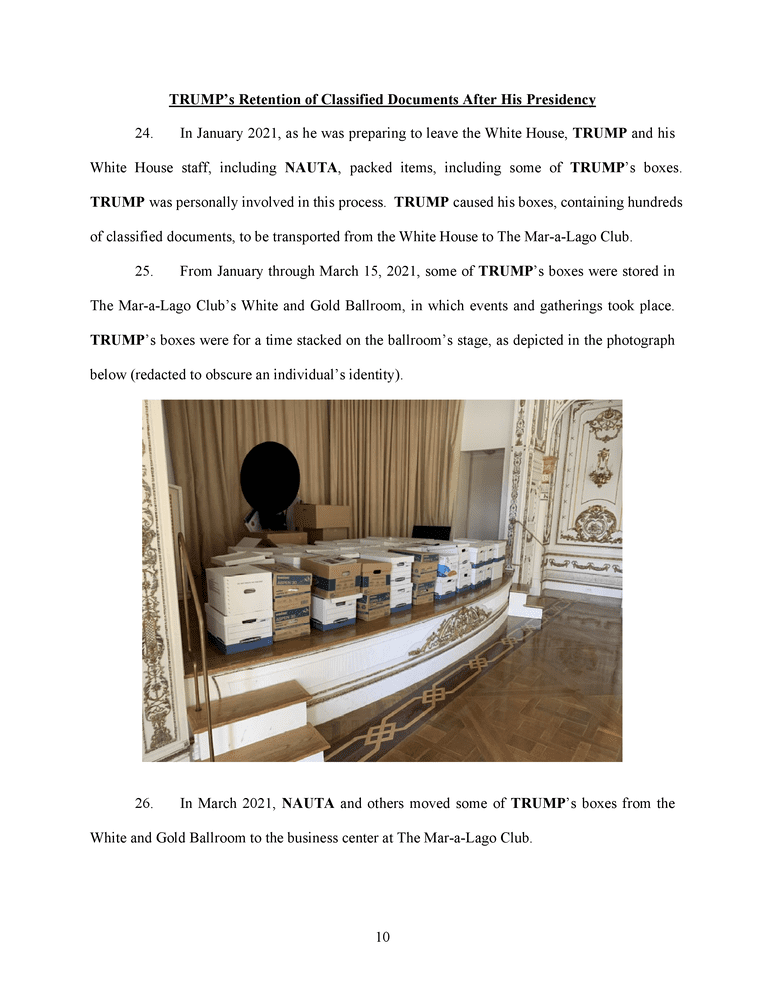
Photos of Trump’s boxes out in the open. This is something incredible. Here are Trump’s boxes of mementos, which include classified material, literally displayed on a stage in a ballroom where events were held. The documents were in the location for months, according to the indictment.
Most of the people at Mar-a-Lago are Trump employees and club members, but there are also guests at events.
The place is far from secure, however. A simple internet search will yield multiple examples of Mar-a-Lago intruders.
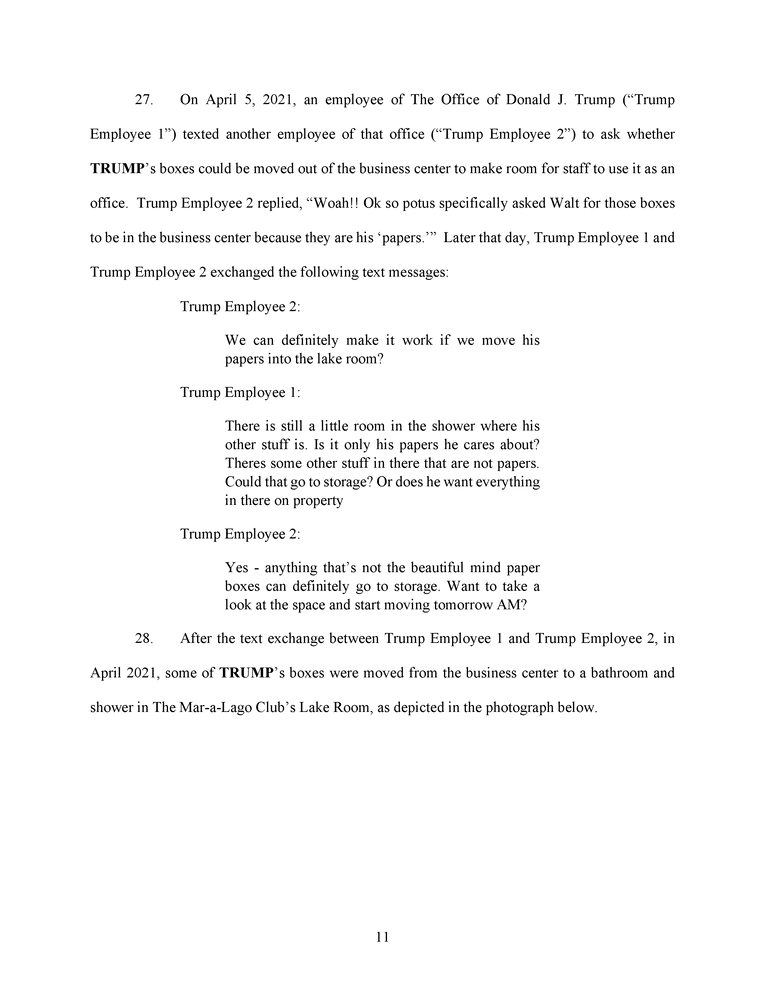
Put them in the bathroom. Employees discussed where to keep the boxes after they needed more office space. They settled on keeping the boxes in a bathroom and shower.
The indictment does not say whether the bathroom was unused during the period when the documents were kept there. The trash can with a trash bag, as seen in the photo below, suggests it was in fact in use.
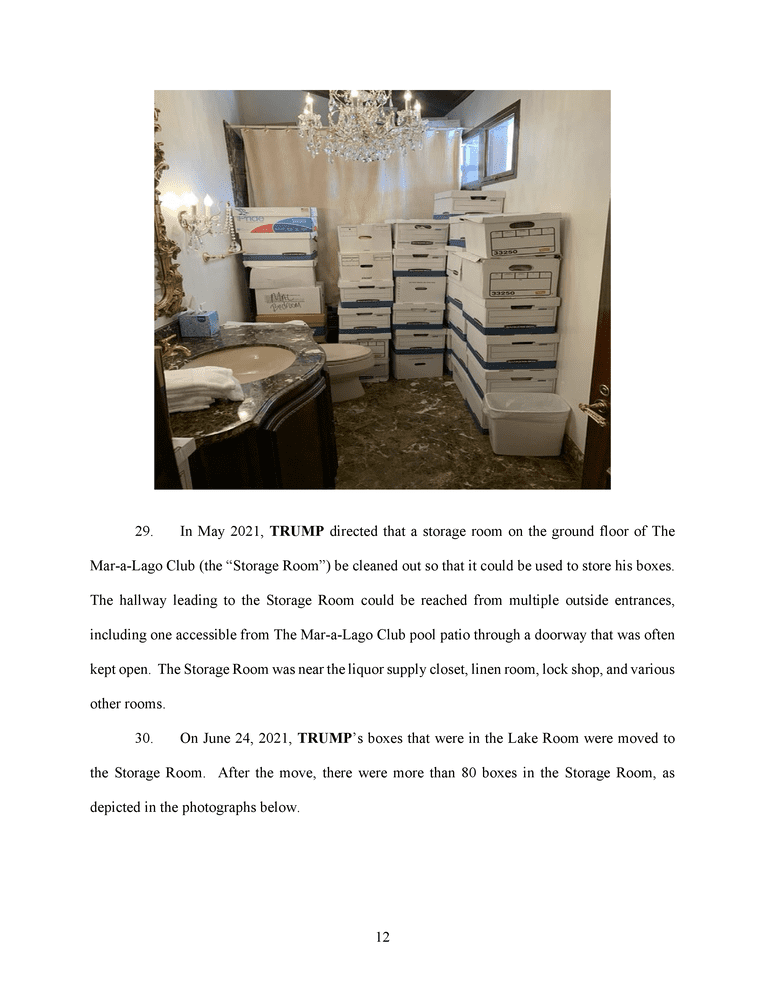
Like a game of Clue. The various locations where Trump allegedly stored classified documents read like a Mar-a-Lago-specific game of Clue: “in a ballroom, a bathroom and shower, an office space, his bedroom, and a storage room.”
Tens of thousands of people could have had access, according to the indictment.
However, and this is worth noting, the indictment does not document any harm that came as a result of the improperly stored material.
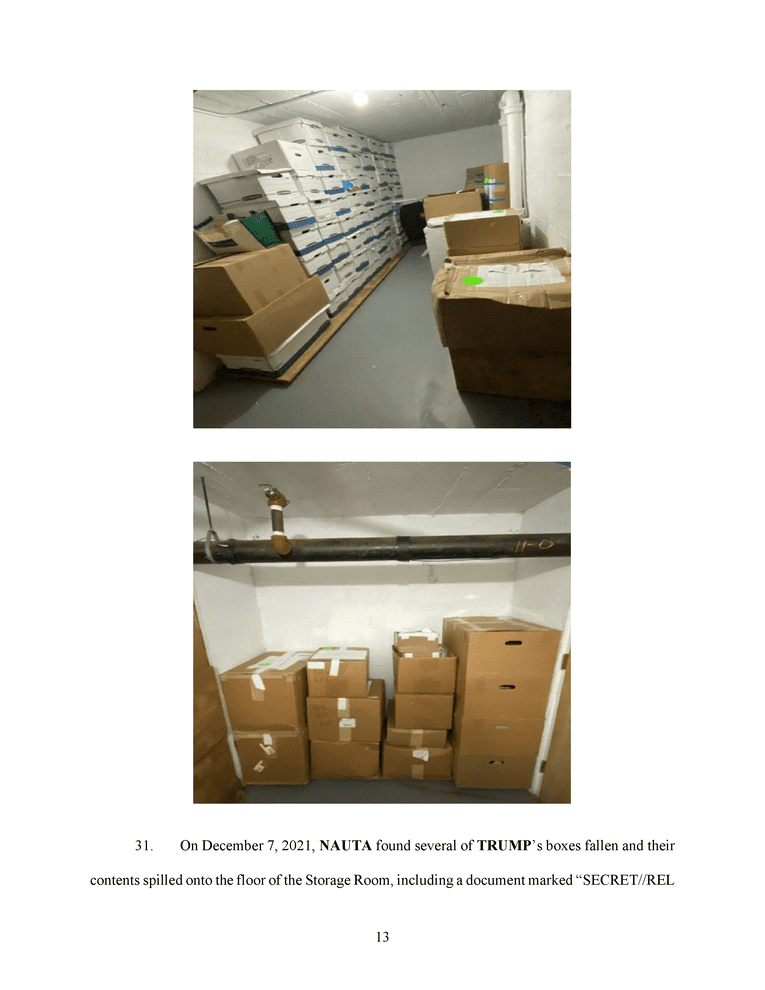
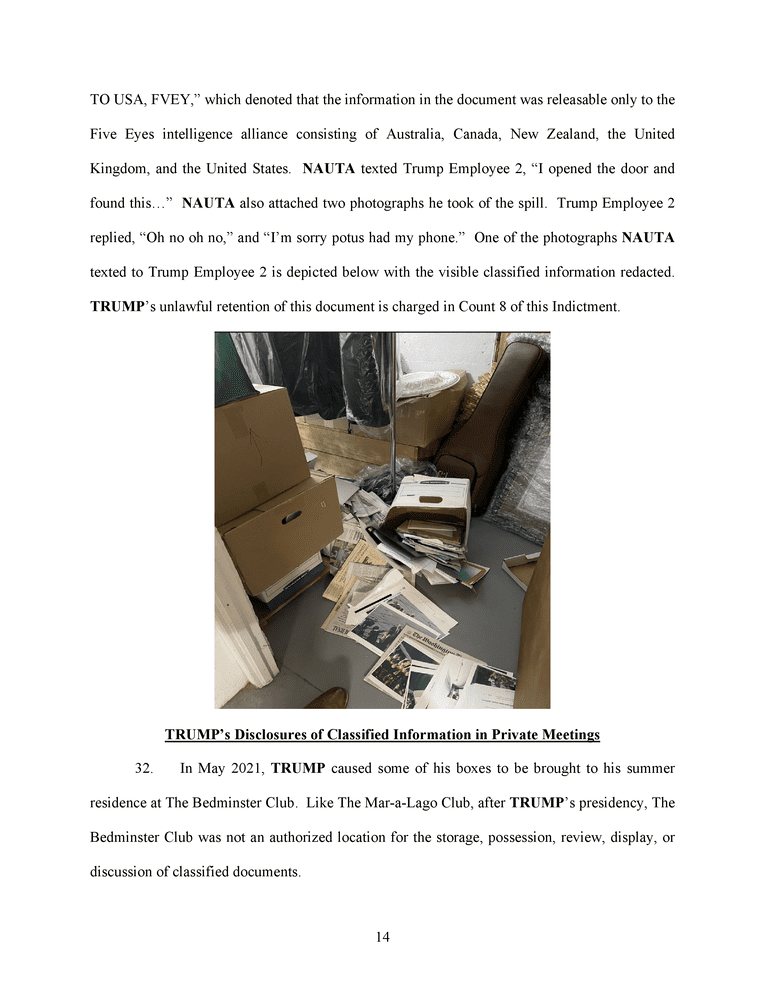
Five Eyes documents spilled on the floor and then were photographed. The documents that spilled onto the floor included the marking “FVEY.”
The Five Eyes are the United States and its closest allies — the United Kingdom, Canada, Australia and New Zealand. They share some of the most sensitive information with each other.
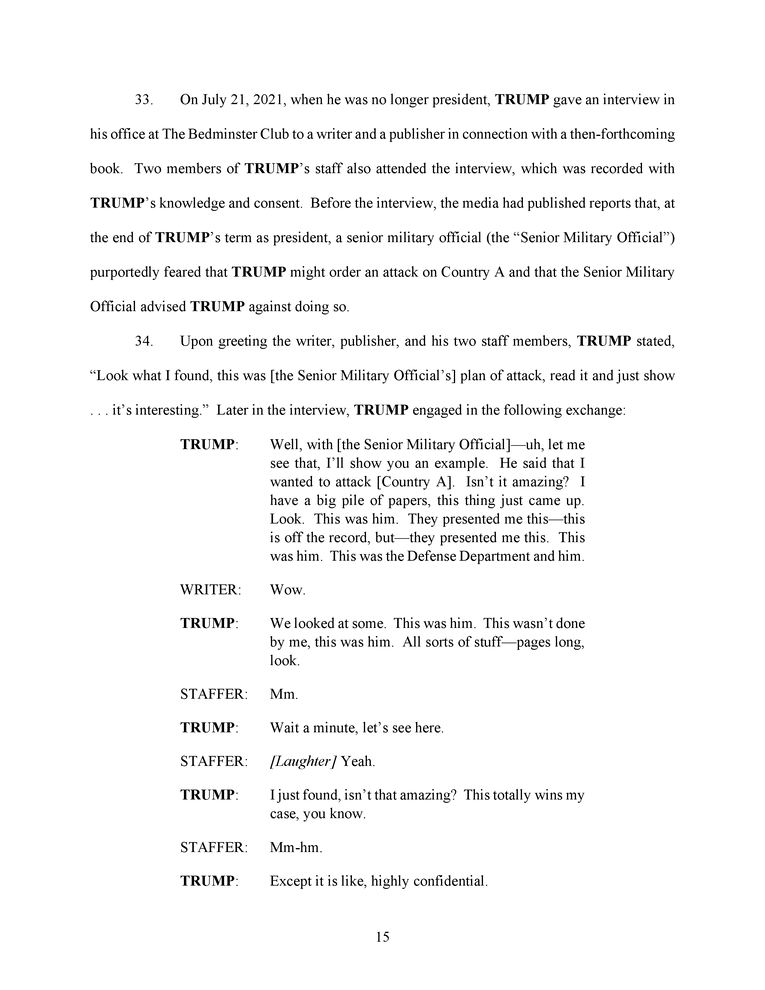
Laughter. Trump appeared to be joking around in the recording as he discussed the Iran war plans that he said refuted a story in The New Yorker about Milley.
“I just found, isn’t this amazing? This totally wins my case, you know.”
Expands on CNN’s previous reporting on the audio recording . CNN’s Katelyn Polantz and Hannah Rabinowitz note that the audio recording was “recorded with Trump’s knowledge and consent,” according to the indictment. And as soon as he greeted the two people writing the Meadows autobiography and two staff members, he told them to read it.
“Look what I found, this was (Milley’s) plan of attack, read it and just show … it’s interesting,” the indictment says Trump said.
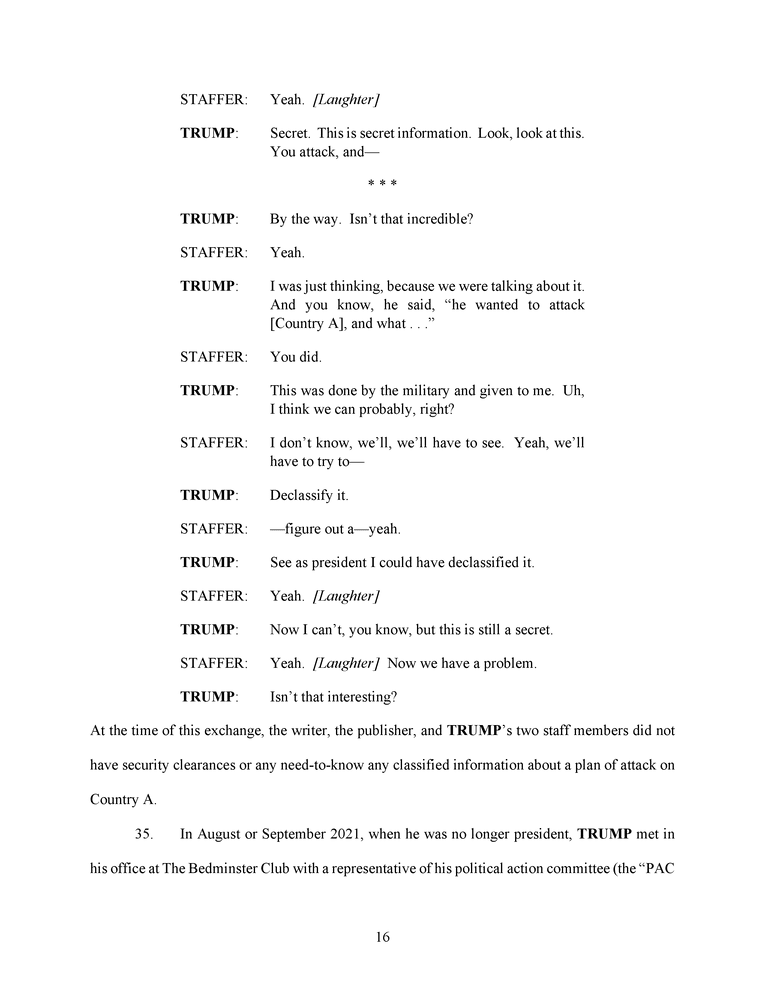
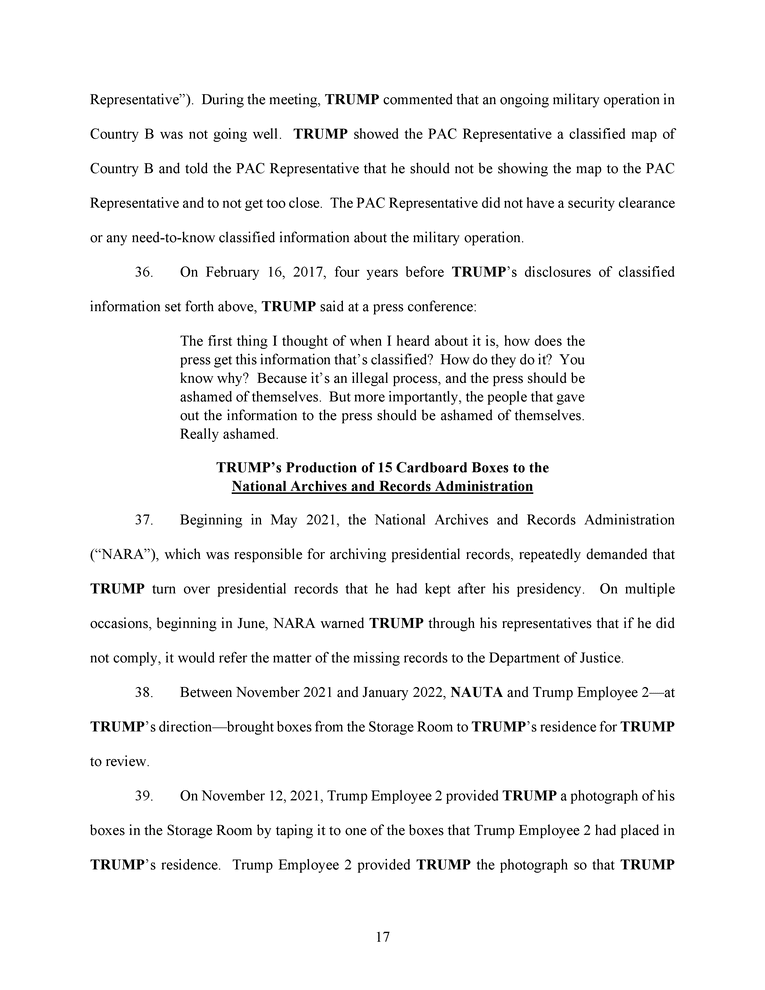
Country B. We know that Country A is Iran. We do not yet know who the PAC official is or which country is represented in the classified map Trump showed off.
Warnings. In the months after he left the White House, Trump went back and forth with the National Archives and Records Administration about missing records. Losing patience in June 2022, they warned him repeatedly that if he did not turn the documents over, they would refer the case to the Department of Justice.
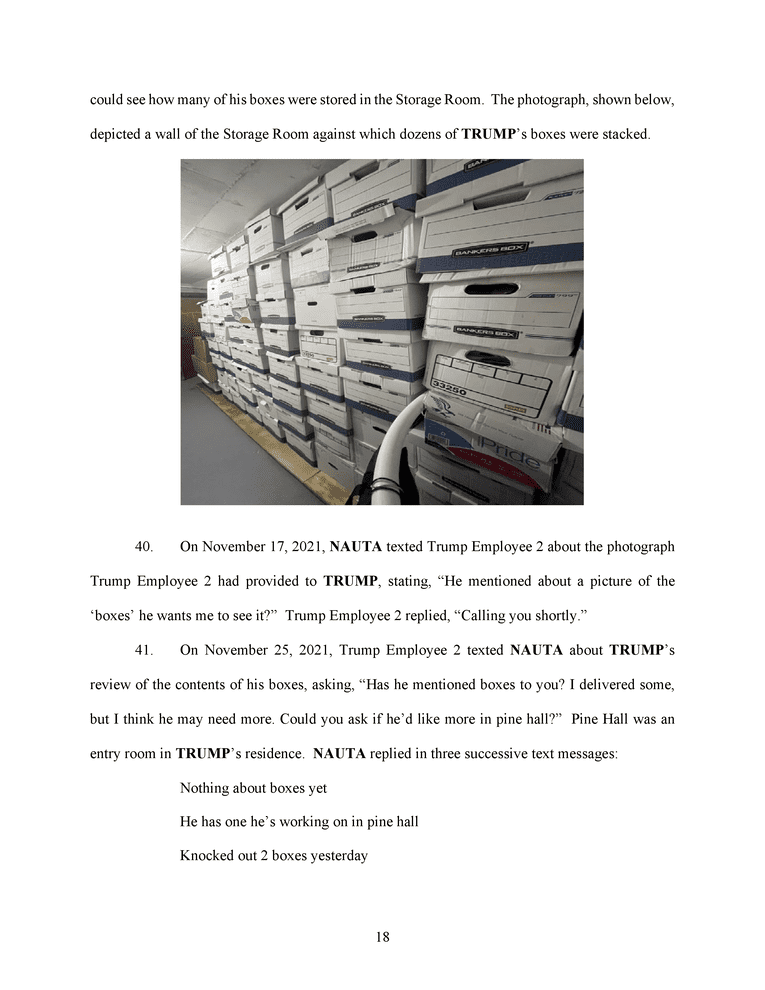
Trump was actively involved. Nauta corresponded with another employee by text message about the boxes, and apparently Trump was shown a photograph of where they were being stored.
The suggestion here is that he kept some boxes in his residence and others in the Mar-a-Lago storage room. He is referenced as discussing the boxes both with Nauta and “Trump Employee 2.” Trump appeared to be going through the boxes one by one.
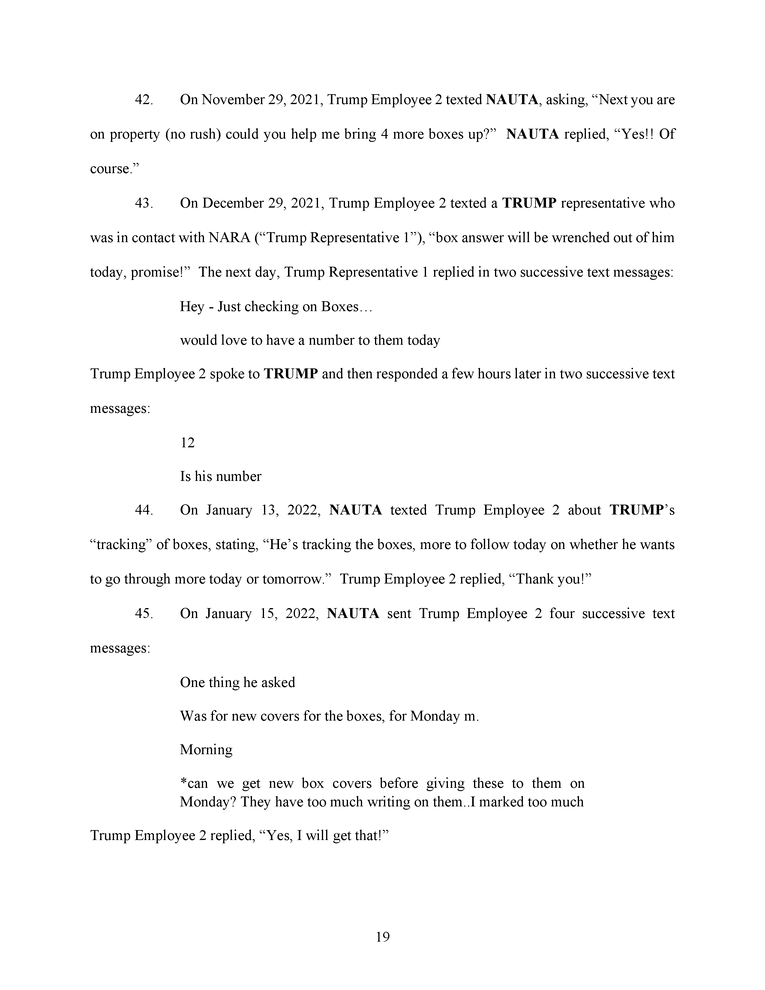
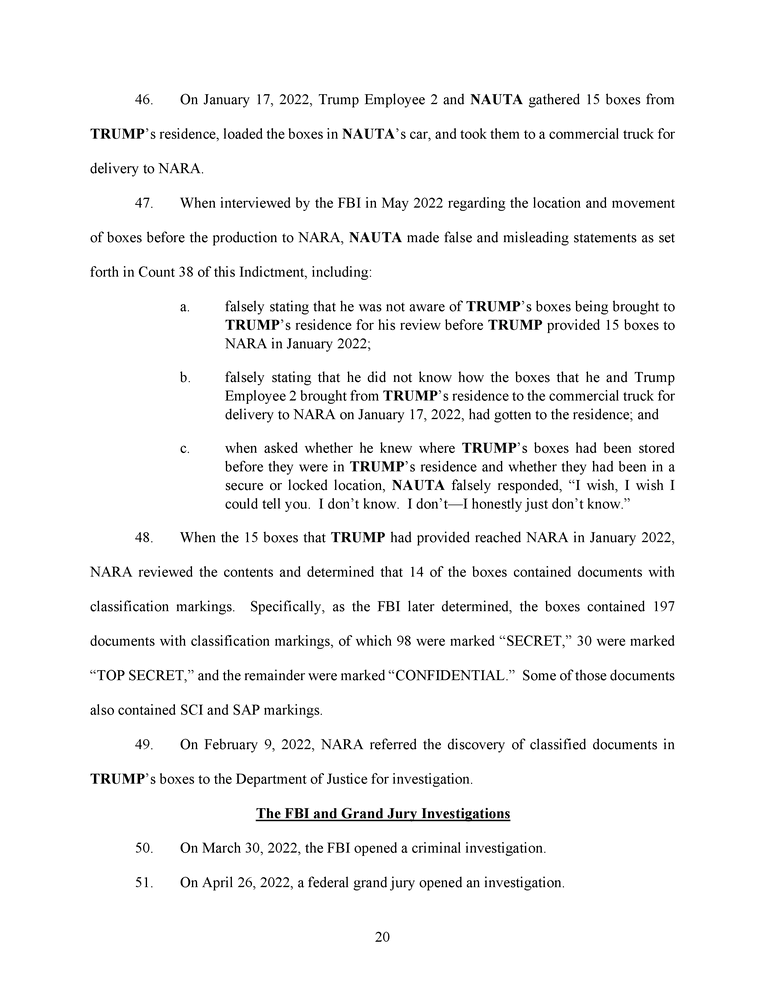
Nauta’s FBI interview . CNN’s Jeremy Herb notes that prosecutors allege that Nauta lied to investigators when he was interviewed by the FBI in May 2022.
The indictment alleges that Nauta falsely said he was not aware of boxes being brought to Trump’s residence for his review before Trump provided 15 boxes to the National Archives in 2022. But Nauta himself had helped move boxes from the storage room to Trump’s residence, according to the indictment.
“Nauta did in fact know that the boxes in Pine Hall had come from the Storage Room, as Nauta himself, with the assistance of Trump Employee 2, had moved the boxes from the Storage Room to Pine Hall; and Nauta had observed the boxes in and moved them to various locations at The Mar-a-Lago Club,” the indictment states.
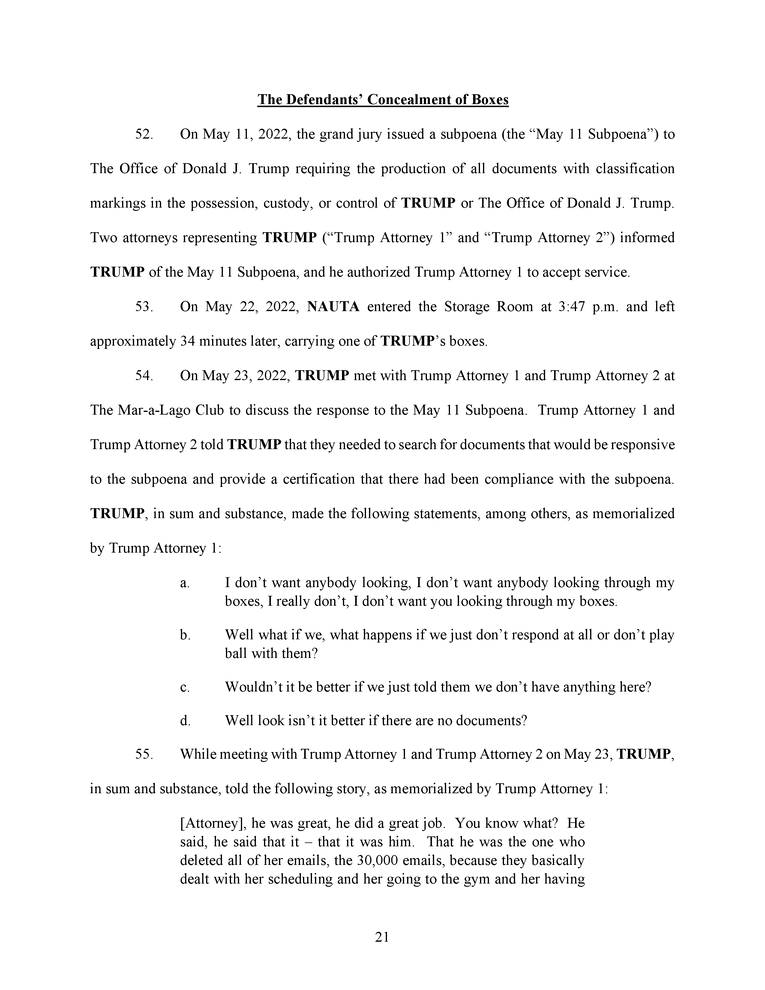
Asking lawyers to lie about “my boxes.” CNN’s Tierney Sneed notes that when lawyers for Trump met with him to discuss how to respond to a May 2022 subpoena seeking documents marked as classified at Mar-a-Lago, Trump allegedly suggested to them they should tell the Justice Department that they had no materials that needed to be turned over, according to the indictment.
“I don’t want anybody looking, I don’t want anybody looking through my boxes, I really don’t, I don’t want you looking through my boxes,” Trump said, as recounted by the indictment, which cited how one of the attorneys had “memorialized” the conversation.
While the Trump team ultimately turned over some documents in response to the May subpoena, weeks later the FBI conducted a search of Mar-a-Lago and found about 100 more records with classified markings.
One question. When the attorney is said to have “memorialized” the conversation, is that a recording? Notes?


Five Eyes documents spilled on the floor and then were photographed. The documents that spilled onto the floor included the marking “FVEY.”
The Five Eyes are the United States and its closest allies — the United Kingdom, Canada, Australia and New Zealand. They share some of the most sensitive information with each other.

Laughter. Trump appeared to be joking around in the recording as he discussed the Iran war plans that he said refuted a story in The New Yorker about Milley.
“I just found, isn’t this amazing? This totally wins my case, you know.”
Expands on CNN’s previous reporting on the audio recording . CNN’s Katelyn Polantz and Hannah Rabinowitz note that the audio recording was “recorded with Trump’s knowledge and consent,” according to the indictment. And as soon as he greeted the two people writing the Meadows autobiography and two staff members, he told them to read it.
“Look what I found, this was (Milley’s) plan of attack, read it and just show … it’s interesting,” the indictment says Trump said.


Country B. We know that Country A is Iran. We do not yet know who the PAC official is or which country is represented in the classified map Trump showed off.
Warnings. In the months after he left the White House, Trump went back and forth with the National Archives and Records Administration about missing records. Losing patience in June 2022, they warned him repeatedly that if he did not turn the documents over, they would refer the case to the Department of Justice.

Trump was actively involved. Nauta corresponded with another employee by text message about the boxes, and apparently Trump was shown a photograph of where they were being stored.
The suggestion here is that he kept some boxes in his residence and others in the Mar-a-Lago storage room. He is referenced as discussing the boxes both with Nauta and “Trump Employee 2.” Trump appeared to be going through the boxes one by one.


Nauta’s FBI interview . CNN’s Jeremy Herb notes that prosecutors allege that Nauta lied to investigators when he was interviewed by the FBI in May 2022.
The indictment alleges that Nauta falsely said he was not aware of boxes being brought to Trump’s residence for his review before Trump provided 15 boxes to the National Archives in 2022. But Nauta himself had helped move boxes from the storage room to Trump’s residence, according to the indictment.
“Nauta did in fact know that the boxes in Pine Hall had come from the Storage Room, as Nauta himself, with the assistance of Trump Employee 2, had moved the boxes from the Storage Room to Pine Hall; and Nauta had observed the boxes in and moved them to various locations at The Mar-a-Lago Club,” the indictment states.

Asking lawyers to lie about “my boxes.” CNN’s Tierney Sneed notes that when lawyers for Trump met with him to discuss how to respond to a May 2022 subpoena seeking documents marked as classified at Mar-a-Lago, Trump allegedly suggested to them they should tell the Justice Department that they had no materials that needed to be turned over, according to the indictment.
“I don’t want anybody looking, I don’t want anybody looking through my boxes, I really don’t, I don’t want you looking through my boxes,” Trump said, as recounted by the indictment, which cited how one of the attorneys had “memorialized” the conversation.
While the Trump team ultimately turned over some documents in response to the May subpoena, weeks later the FBI conducted a search of Mar-a-Lago and found about 100 more records with classified markings.
One question. When the attorney is said to have “memorialized” the conversation, is that a recording? Notes?
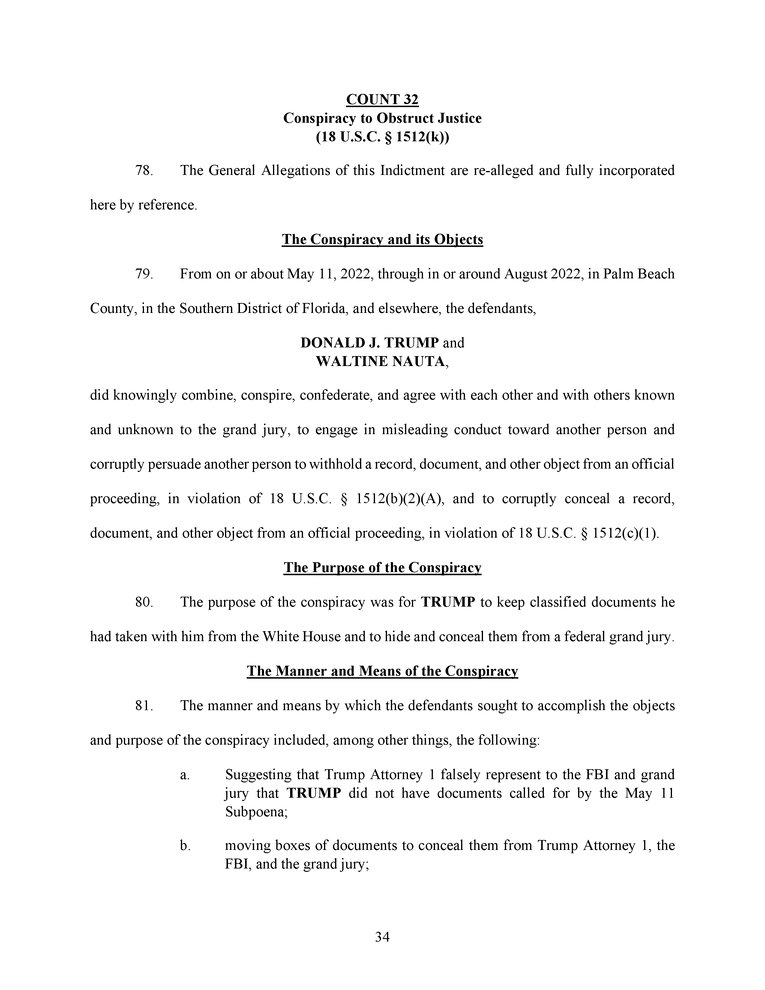
Conspiracy. These are the charges focused on Trump and Nauta. And this is a restatement of much of what we’ve learned already, which is that the government says Trump and Nauta worked to hide and conceal documents to keep them from the government, which owned them.
What is not shown in the indictment is that the documents fell into the wrong hands or that the United States was injured — other than its secrets were improperly handled.
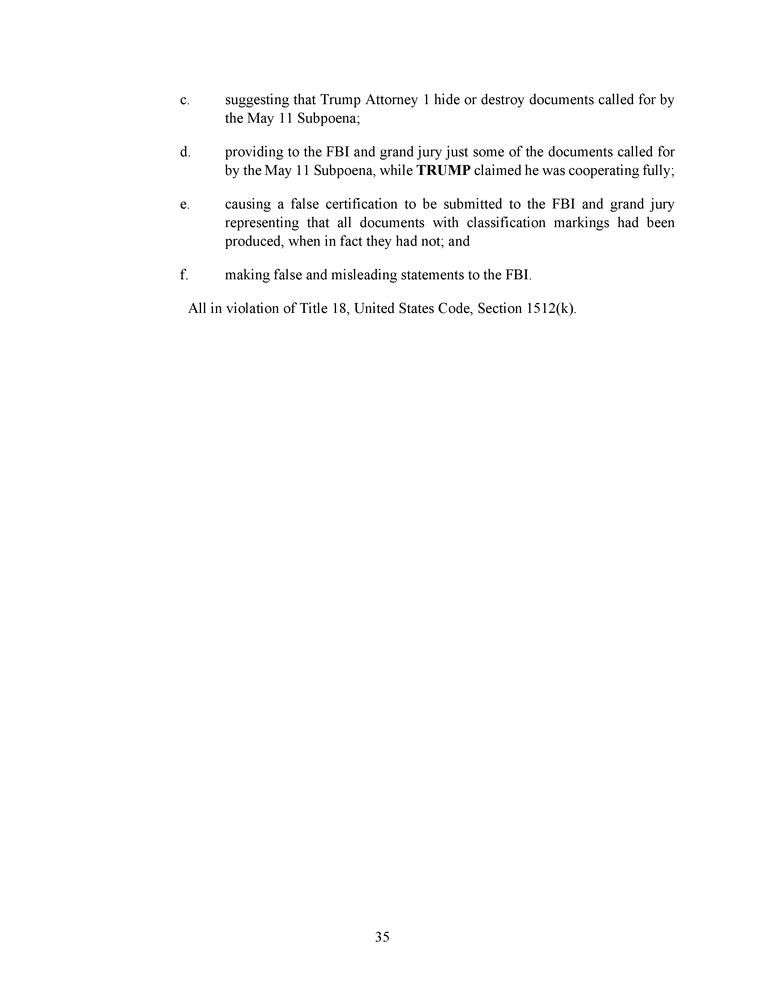
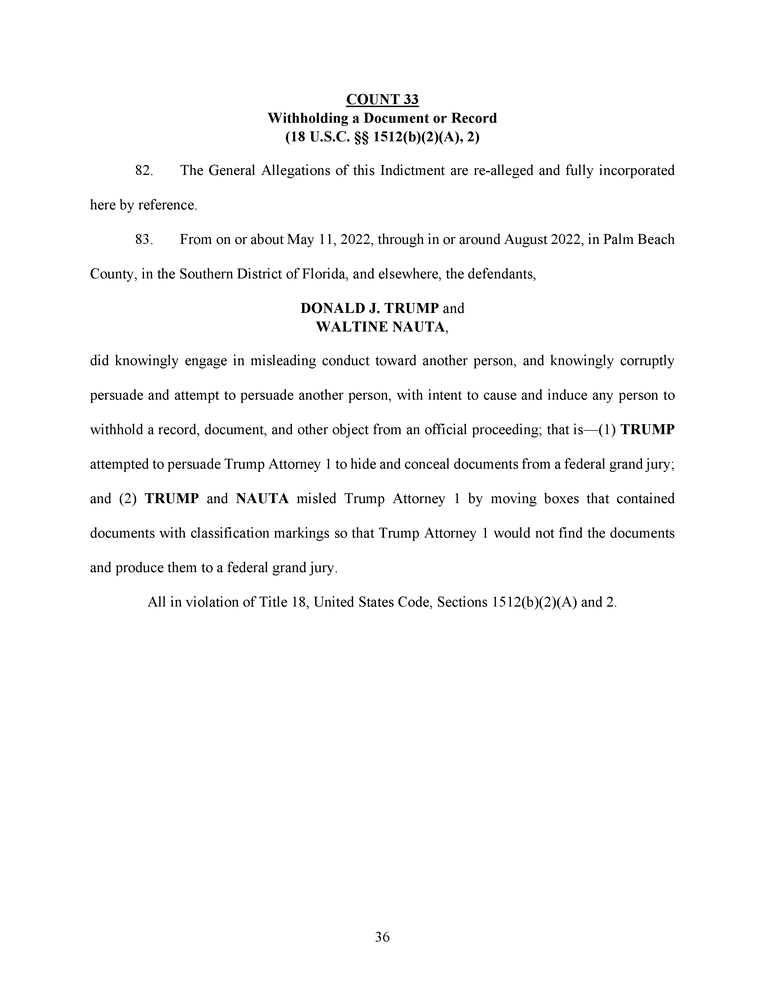
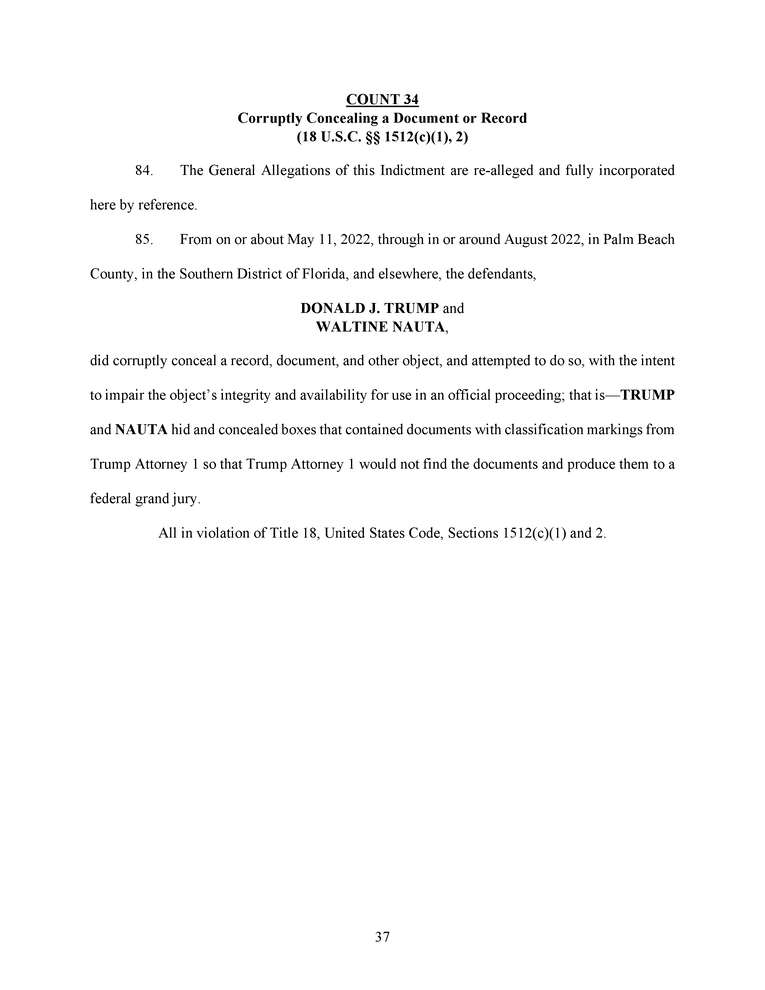
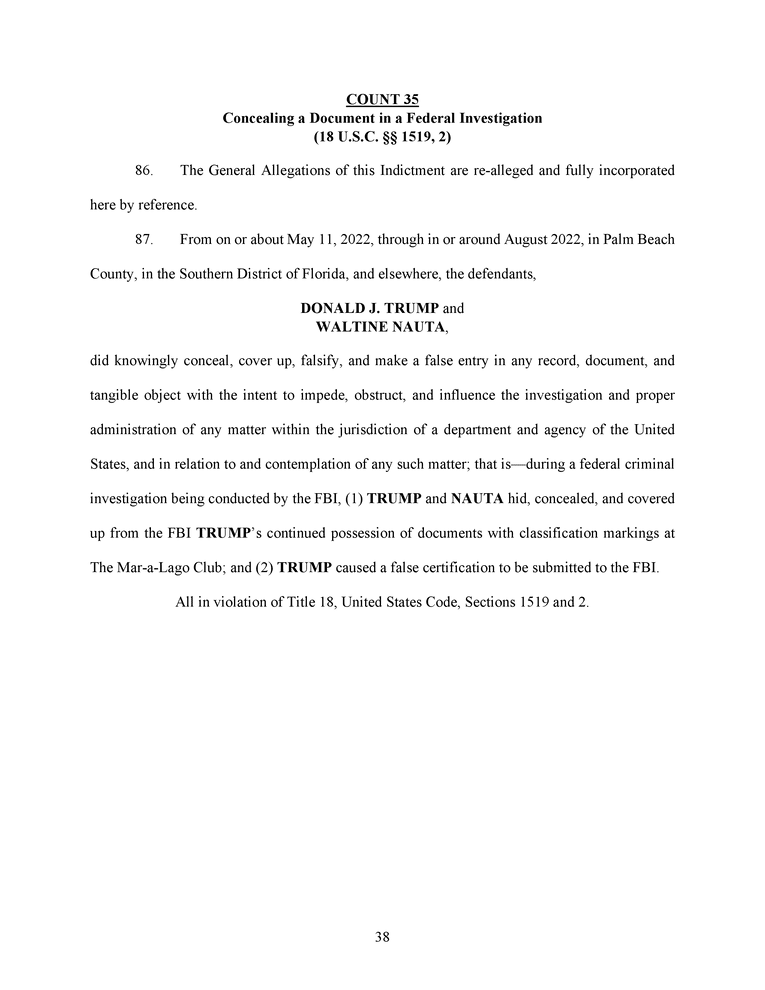
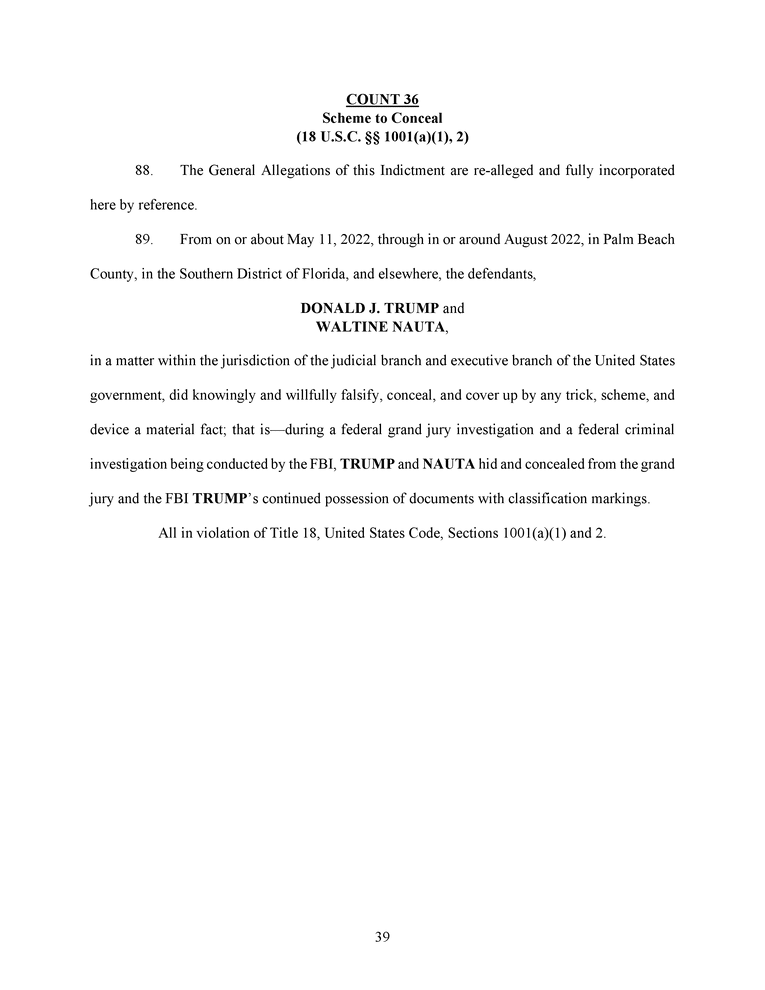
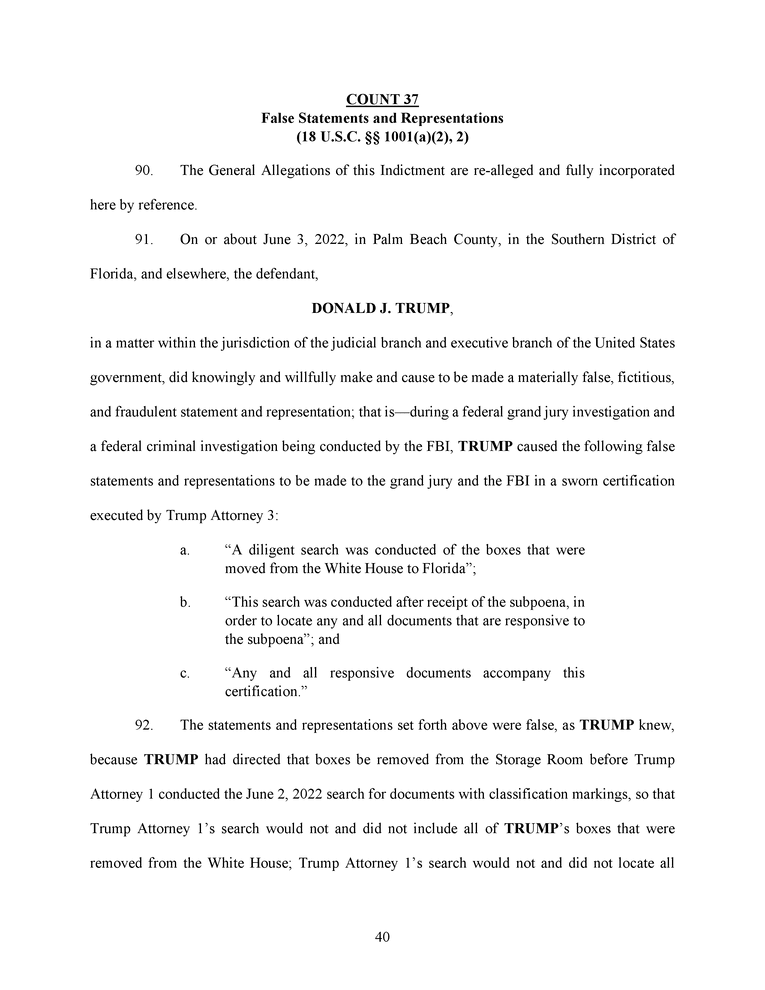
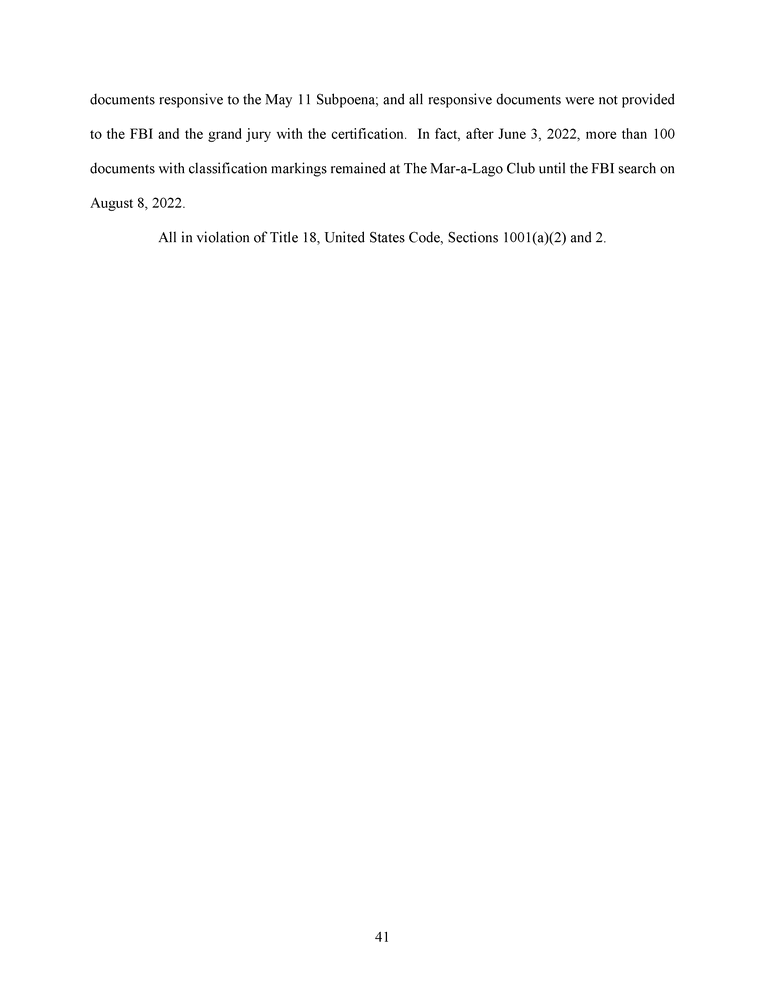
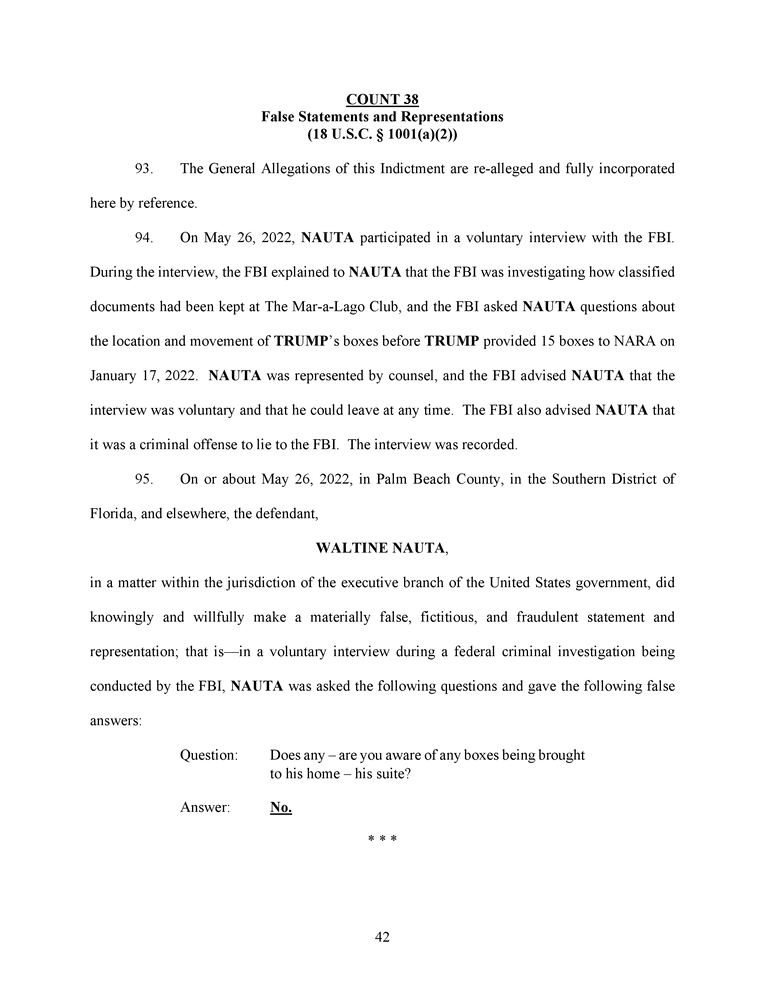
Nauta’s FBI interview. The transcript of the FBI’s interview with Nauta could be seriously problematic for Trump’s aide if the video of him moving boxes actually exists.
“When asked whether he knew where Trump’s boxes had been stored, before they were in Trump’s residence and whether they had been in a secure or locked location, Nauta falsely responded, ‘I wish, I wish I could tell you. I don’t know. I don’t — I honestly just don’t know,’” the indictment said.
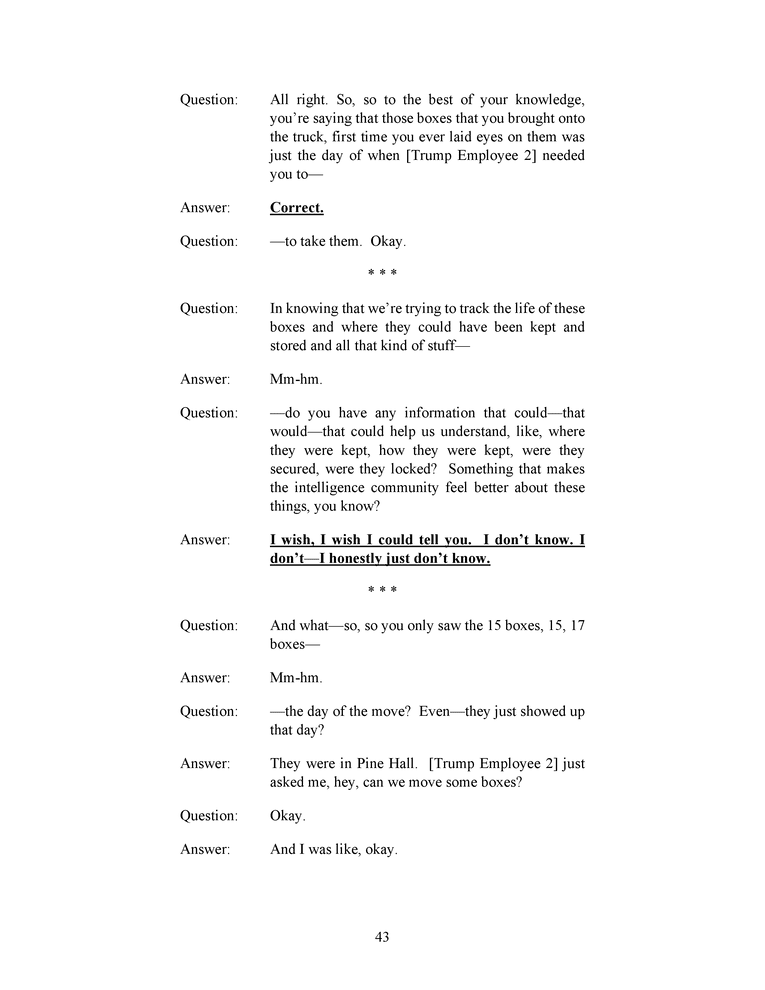
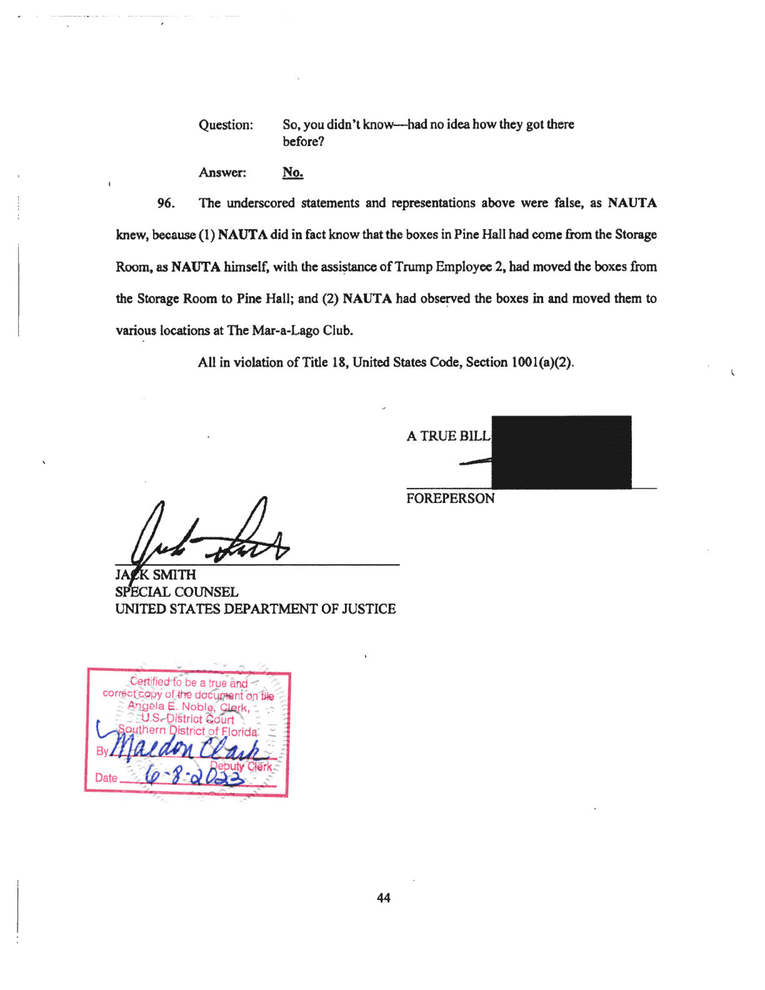
Redacted names, public names. The name and signature of the jury foreperson are redacted. Hopefully those people are spared any harassment. One name everyone will now know is special counsel Jack Smith , who signed this first federal criminal indictment of a former president.
It was a break with protocol for Smith to release the indictment publicly in this way and also for him to hold a brief appearance before cameras explaining the severity of these charges. He also noted that Trump is innocent until proven guilty in court.

